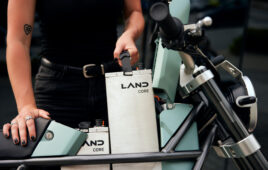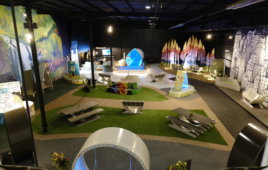By year’s end Primus Power, a startup in Hayward, Calif., could be installing the first commercial deployment of its grid-scale batteries or EnergyPods. The $56 million deal is a milestone for the three-year-old company and could be a significant step toward the goal of adding more power storage to the grid.
Primus Power says patented EnergyCell technology represents a breakthrough in zinc-flow battery technology. Its design provides good current density from an advanced electrode, it has been accelerated-life tested for reliability over 20 years, and made of commodity components
Primus Power’s EnergyPods differ from conventional lithium ion batteries that fill your laptop or cell phone. The company makes flow batteries, large refrigerator-looking devices that pump liquid electrolyte over an electrode to store energy. Power companies are looking to add energy storage devices such as batteries to the grid as a way to store energy generated by clean power sources like solar and wind, which only provide energy when the sun shines and wind blows. The idea is that a flow battery could store energy from a wind farm and release the energy when the wind slows.
While lithium ion batteries are also being connected to the power grid, they tend to offer a quick, fast burst of storage capacity for about an hour, explains Primus Power’s CEO Tom Stepien. Flow batteries, unlike conventional batteries, provide prolonged storage for four or five hours, which makes them more ideal to match with clean power sources, he says. The Modesto utility will use the flow batteries to “firm up” wind power coming from a wind farm in Oregon to Modesto.
Primus’ EnergyPods are made of 14 flow batteries that fit in a shipping container and provide 250 kW. For utility deployments, the shipping containers are stacked together; connected with a computing and control container, they can provide 2 MW of storage, and more. The flow battery costs $500 per kWh —less than many battery technologies — and can last for 20 years.
While flow batteries have been under development for years, Stepien says that some of Primus Power’s advantages are that its battery only has one tank, one flow loop, one pump, and no separator so the system is more efficient than others on the market that use two tanks and a seperator. The battery’s electrode is also made of metal, compared to the felt or plastic electrodes of competitors, which means it has higher conductivity. The electrolyte that flows through the system is zinc-based.
Primus Power
www.primuspower.com
Windpower Engineering & Development
Filed Under: Green engineering • renewable energy • sustainability




